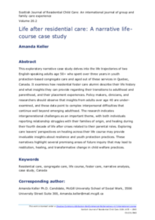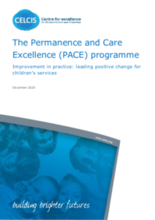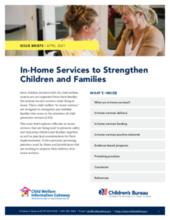Displaying 31 - 40 of 232
This exploratory narrative case study delves into the life trajectories of two English-speaking adults age 50+ who spent over three years in youth protection-based congregate care and aged out of these services in Quebec, Canada.
This study uses grounded theory methods to generate a deeper understanding of the experiences that help youth achieve relational permanency, regardless of whether they emancipate from care or are adopted.
This report provides an insight into the Permanence and Care Excellence (‘PACE’) programme – a Quality Improvement programme underway from 2014-2020 which engaged with local authority partnerships in 27 of the 32 Scottish local authority areas. The programme was aimed at supporting local authority partnerships across Scotland to reduce permanence planning timescales for looked after infants, children and young people using a Quality Improvement framework.
This study aims to answer two research questions: a) How do youth and staff/professionals define/conceptualize authentic youth engagement (AYE)? and b) What are youths’ and staff/professionals’ recommended strategies for authentically engaging youth? Thirty stakeholder interviews (15 youth, 15 staff/professionals) and 81 surveys (46 youth, 35 staff/professionals) were completed.
This article describes a major development in child care practice in Wales that has occurred over the past two years. The Adopting Together Service (ATS) involves a unique, innovative and multi-layered collaboration between the voluntary adoption agencies (VAAs – non-governmental charities) and regional adoption teams (statutory agencies) to secure permanence for children who wait the longest to find families.
This article summarises the Narrative Model and shows how it supports placement stability for children.
This report provides key recommendations from three roundtable discussions about how to support permanency with kin, relational permanency, and successful older youth adoption.
This guidance from Miracle Foundation outlines case management process and tools aimed at children in Child Care Institutions (CCIs) in India who have been placed with their families during the COVID-19 pandemic. The purpose of these case management processes and tools is to determine feasibility of permanent placement and expedite family-based care in families in which children were placed quickly and without proper preparation during COVID-19 lockdown.
The Pathways of Care Longitudinal Study (POCLS) is the first large-scale prospective longitudinal study of children and young people in out-of-home care (OOHC) in Australia.
This chapter from the Routledge Handbook of Family Law and Policy examines how permanency for children is achieved in New Zealand in the child protection context.





